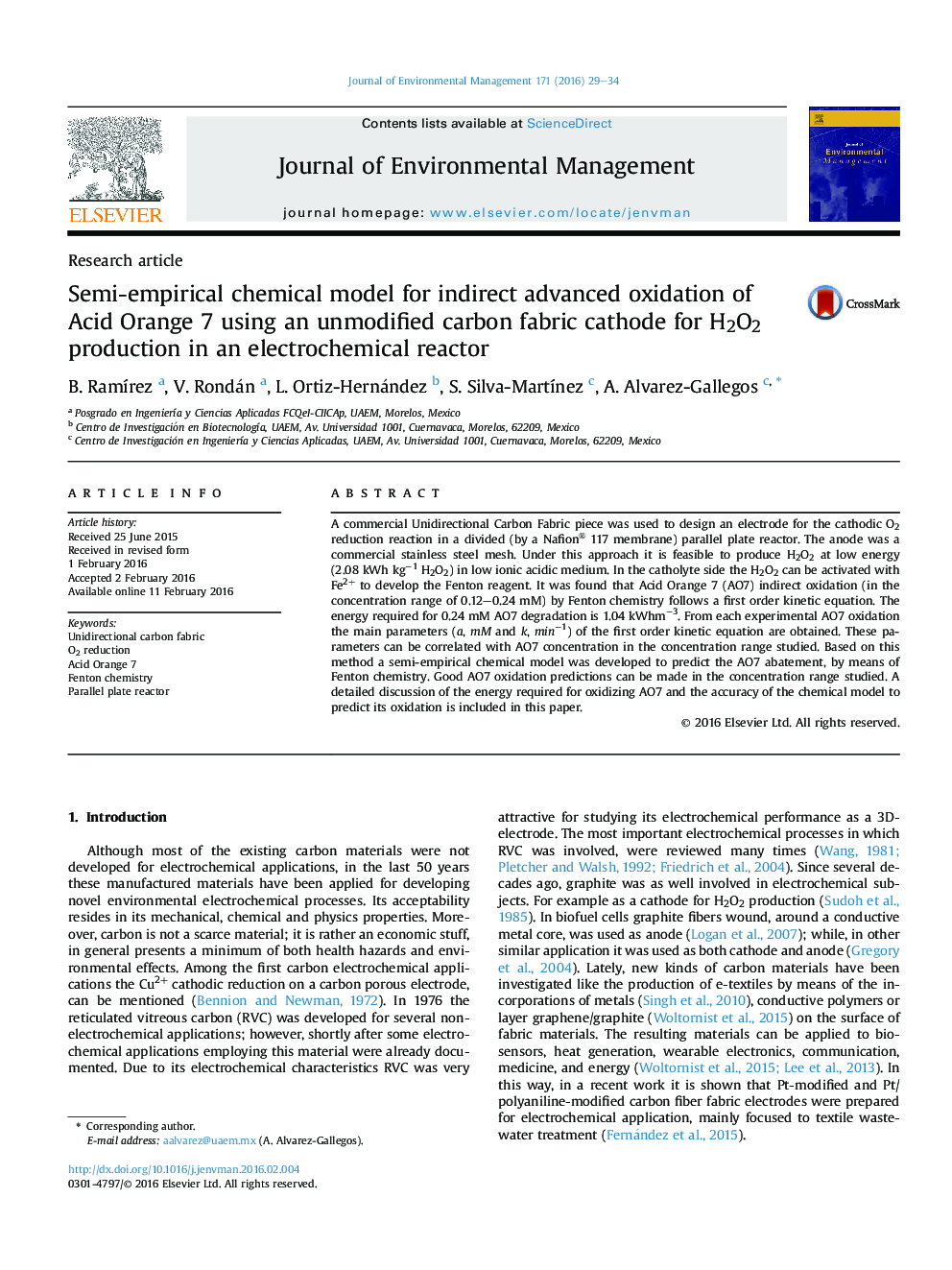| کد مقاله | کد نشریه | سال انتشار | مقاله انگلیسی | نسخه تمام متن |
|---|---|---|---|---|
| 1055294 | 1485241 | 2016 | 6 صفحه PDF | دانلود رایگان |
• Unidirectional Carbon Fabric can be used in environmental applications.
• Unidirectional Carbon Fabric is a feasible cathode for O2 reduction in acidic media.
• H2O2 can be electro-produced at low energy, 2.08 kWh kg−1 H2O2.
• The energy required for 0.24 mM AO7 degradation is 1.04 kWh m−3.
• A semi-empirical chemical model was developed to predict the AO7 abatement.
A commercial Unidirectional Carbon Fabric piece was used to design an electrode for the cathodic O2 reduction reaction in a divided (by a Nafion® 117 membrane) parallel plate reactor. The anode was a commercial stainless steel mesh. Under this approach it is feasible to produce H2O2 at low energy (2.08 kWh kg−1 H2O2) in low ionic acidic medium. In the catholyte side the H2O2 can be activated with Fe2+ to develop the Fenton reagent. It was found that Acid Orange 7 (AO7) indirect oxidation (in the concentration range of 0.12–0.24 mM) by Fenton chemistry follows a first order kinetic equation. The energy required for 0.24 mM AO7 degradation is 1.04 kWhm−3. From each experimental AO7 oxidation the main parameters (a, mM and k, min−1) of the first order kinetic equation are obtained. These parameters can be correlated with AO7 concentration in the concentration range studied. Based on this method a semi-empirical chemical model was developed to predict the AO7 abatement, by means of Fenton chemistry. Good AO7 oxidation predictions can be made in the concentration range studied. A detailed discussion of the energy required for oxidizing AO7 and the accuracy of the chemical model to predict its oxidation is included in this paper.
Figure optionsDownload as PowerPoint slide
Journal: Journal of Environmental Management - Volume 171, 15 April 2016, Pages 29–34
